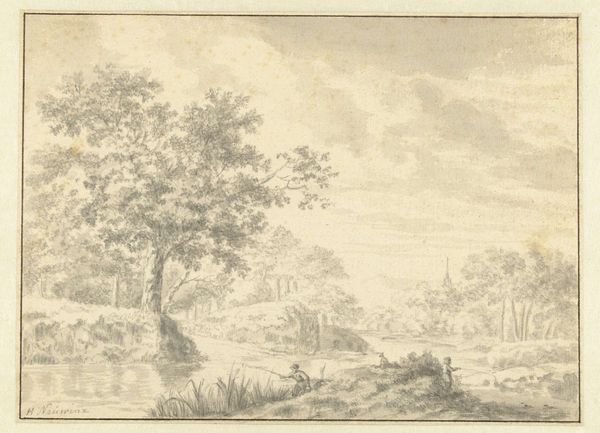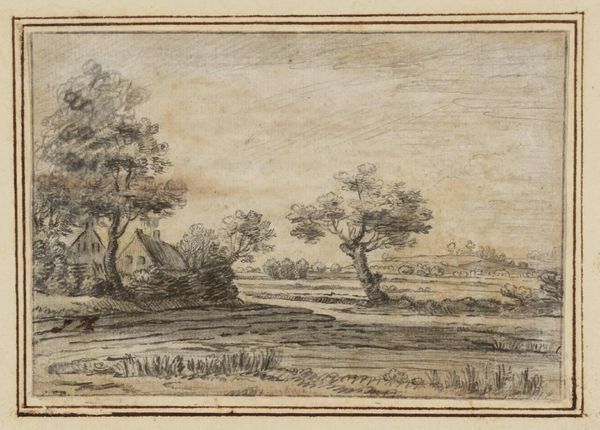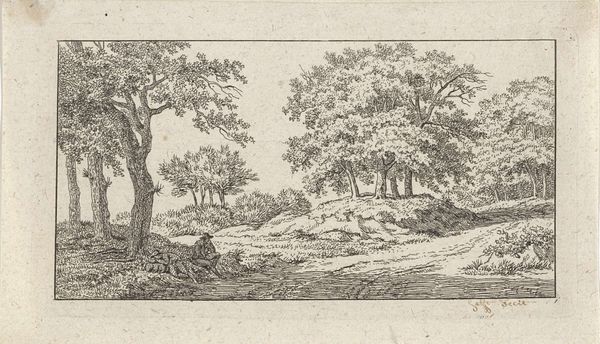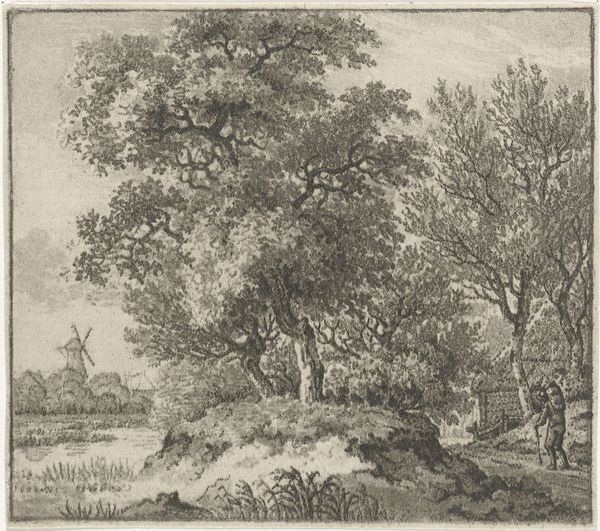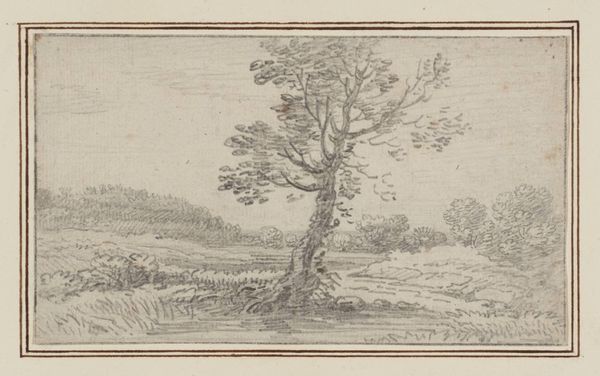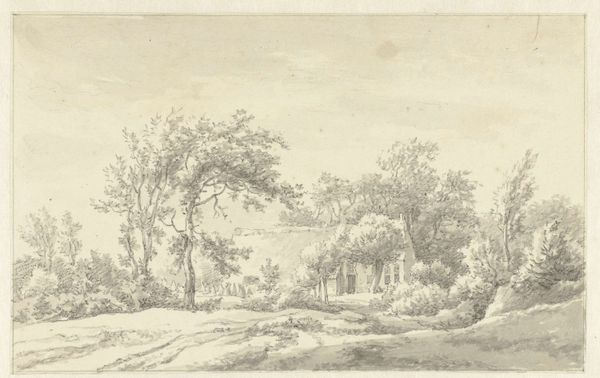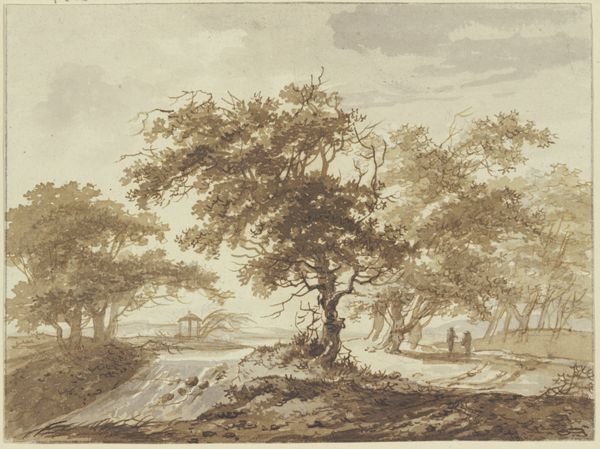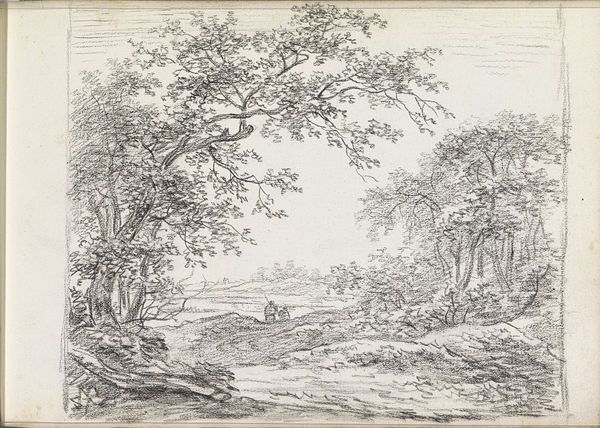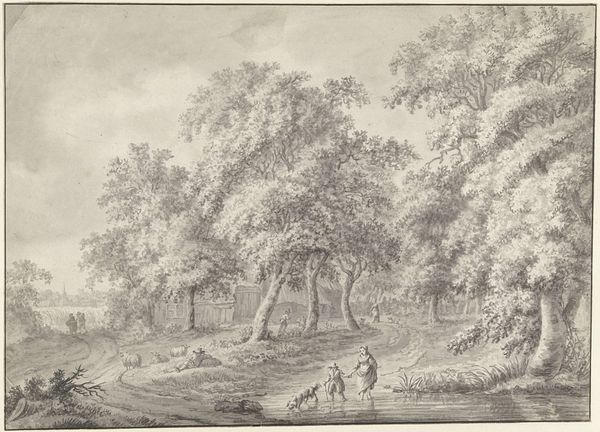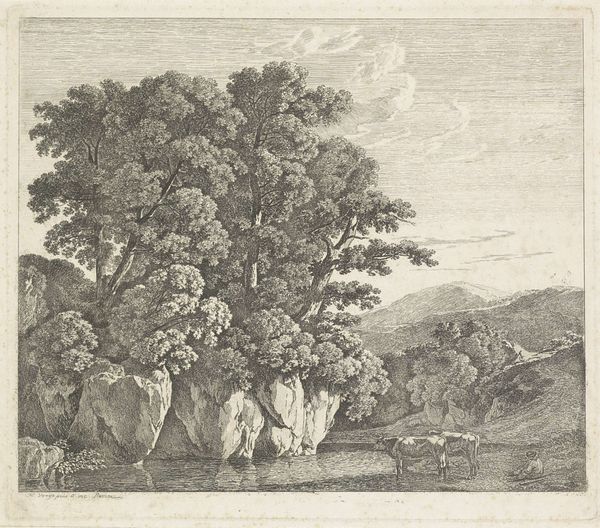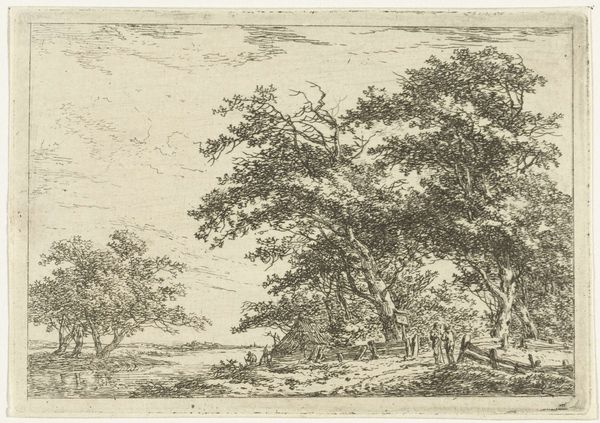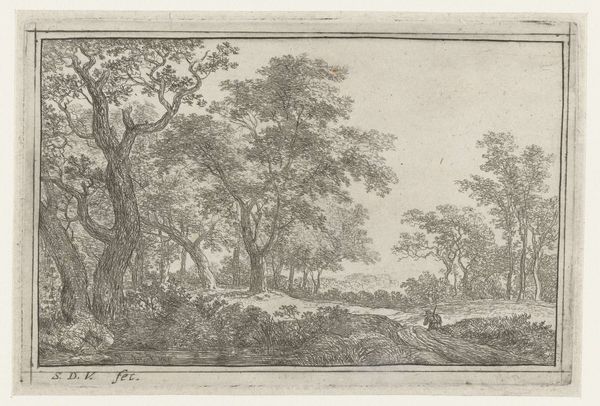
Dimensions: height 104 mm, width 153 mm
Copyright: Rijks Museum: Open Domain
Curator: What strikes me immediately is the gentle quality of light in this drawing. Editor: Indeed, it’s a very calm and muted scene. We’re looking at Dirk Kuipers’ “Landscape with Two Men Under a Tree,” made sometime between 1743 and 1796. It’s an ink and pencil drawing on paper. Curator: The use of ink and pencil suggests a focus on line and tonal variation to construct form, very interesting given the romanticism assigned to it. I mean, it feels rather rudimentary. I want to look closely at paper stock and where it was made; the pigments that create these browns are all key to deciphering more. Editor: I can understand that focus. But the subject matter here feels quite loaded. Landscape depictions during this period weren't merely about recording the scenery, were they? What is this idealisation of the land expressing during a time of social upheaval and shifting class structures? The placement of these men becomes less about them, and more about humanity's relationship to land ownership and the control of resources. Curator: Resource exploitation is absolutely material! The pigments that produce this bucolic scene come from somewhere. What type of labour was involved in their extraction and processing? This also bears considering alongside questions around patronage; we must explore who commissioned and eventually consumed art that perpetuated a particularly idealised vision of the period. Editor: Exactly. I wonder about the relationship between the two figures. Is there an imbalance of power expressed? Are they landowners, discussing their harvest, or perhaps even negotiating contracts with tenant farmers? Their leisure is built upon someone else's exploitation. Curator: Certainly! I can see where this depiction can reinforce a skewed narrative of power and prosperity. That also prompts questions about the physical act of creation. Kuipers may not have directly toiled in fields or processed pigments, but his labor as an artist served a very particular purpose for those with capital to protect. Editor: Thanks to this piece, I see more clearly how deeply embedded political messages are in landscapes. Curator: And I’m further drawn to analyse how materials shape those very political narratives.
Comments
No comments
Be the first to comment and join the conversation on the ultimate creative platform.
